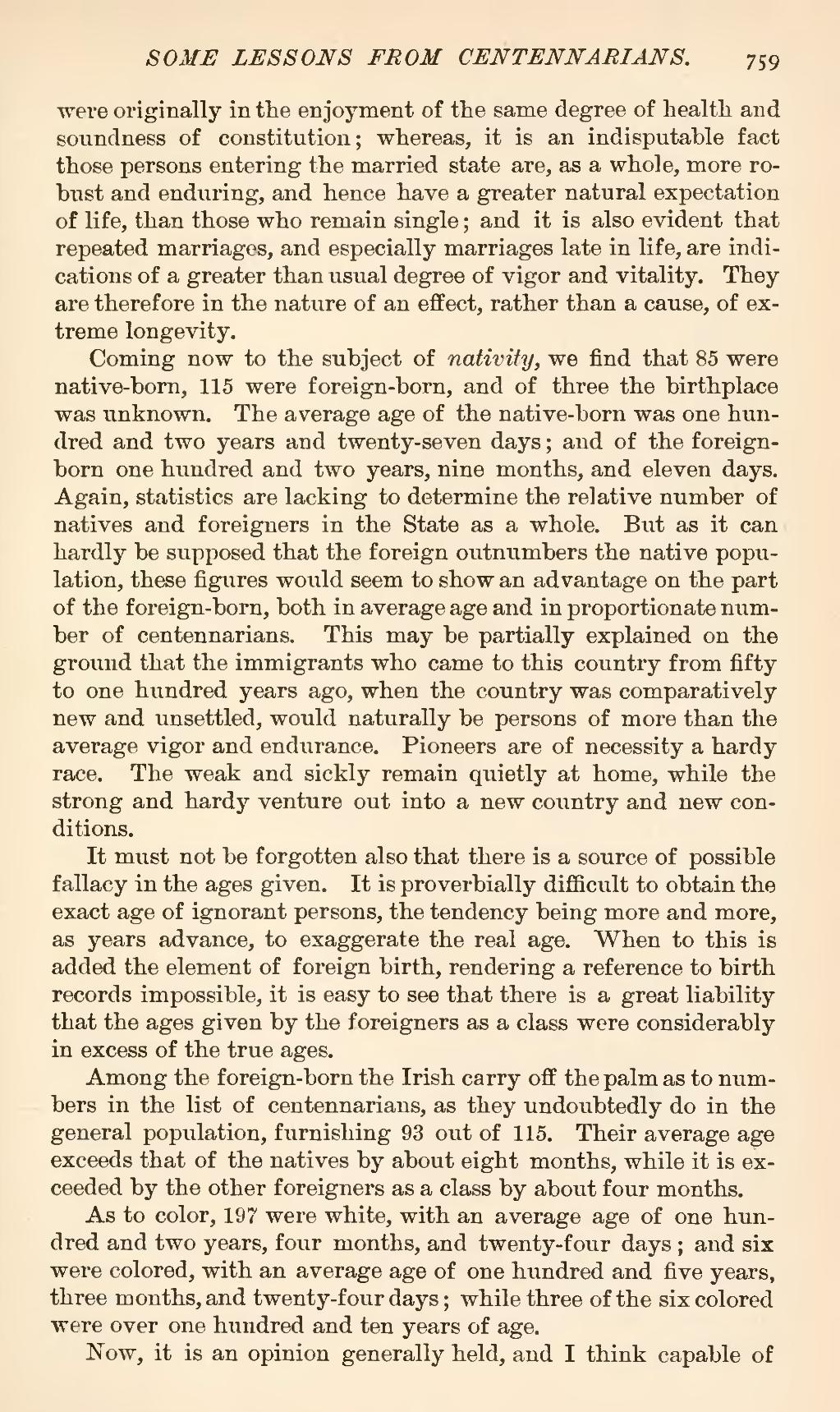were originally in the enjoyment of the same degree of health and soundness of constitution; whereas, it is an indisputable fact those persons entering the married state are, as a whole, more robust and enduring, and hence have a greater natural expectation of life, than those who remain single; and it is also evident that repeated marriages, and especially marriages late in life, are indications of a greater than usual degree of vigor and vitality. They are therefore in the nature of an effect, rather than a cause, of extreme longevity.
Coming now to the subject of nativity, we find that 85 were native-born, 115 were foreign-born, and of three the birthplace was unknown. The average age of the native-born was one hundred and two years and twenty-seven days; and of the foreign-born one hundred and two years, nine months, and eleven days. Again, statistics are lacking to determine the relative number of natives and foreigners in the State as a whole. But as it can hardly be supposed that the foreign outnumbers the native population, these figures would seem to show an advantage on the part of the foreign-born, both in average age and in proportionate number of centennarians. This may be partially explained on the ground that the immigrants who came to this country from fifty to one hundred years ago, when the country was comparatively new and unsettled, would naturally be persons of more than the average vigor and endurance. Pioneers are of necessity a hardy race. The weak and sickly remain quietly at home, while the strong and hardy venture out into a new country and new conditions.
It must not be forgotten also that there is a source of possible fallacy in the ages given. It is proverbially difficult to obtain the exact age of ignorant persons, the tendency being more and more, as years advance, to exaggerate the real age. When to this is added the element of foreign birth, rendering a reference to birth records impossible, it is easy to see that there is a great liability that the ages given by the foreigners as a class were considerably in excess of the true ages.
Among the foreign-born the Irish carry off the palm as to numbers in the list of centennarians, as they undoubtedly do in the general population, furnishing 93 out of 115. Their average age exceeds that of the natives by about eight months, while it is exceeded by the other foreigners as a class by about four months.
As to color, 197 were white, with an average age of one hundred and two years, four months, and twenty-four days; and six were colored, with an average age of one hundred and five years, three months, and twenty-four days; while three of the six colored were over one hundred and ten years of age.
Now, it is an opinion generally held, and I think capable of

